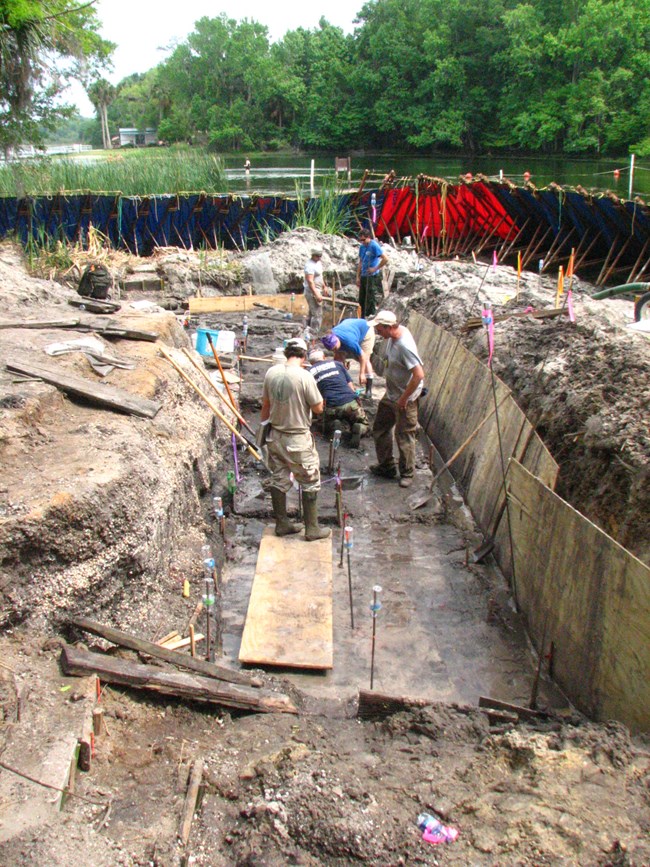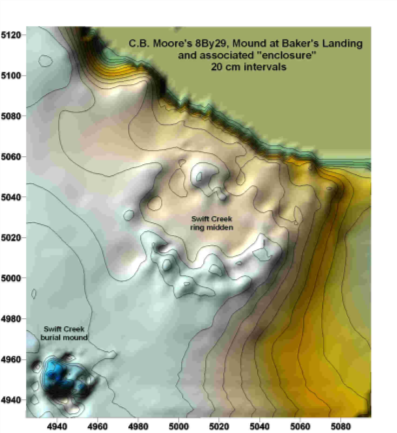
(NPS Photo)
- Salt Springs, Ocala National Forest
surface water levels, ALTASC initiated emergency salvage excavation of the rare deposits. Employing its wide connections within the professional community, ALTASC partnered with archeologists from the state,s two premier universities, FSU and UF; with experts on paleobotanical plants and soil dating from Penn State and the university of Vancouver; and with volunteers ranging as far as Washington state to help recover the valuable materials before they were destroyed by new construction. All in all, four Master of Art theses resulted from the concerted efforts. But the most important result was that a previously unknown site invaluable to the understanding of the prehistory was recorded without a delay in the Forest Service’s construction

(NPS Photo)
- Tyndall Air Force Base
Equally importantly, was the discovery of large circular villages next to each mound that Moore had passed over without mention. Dating between 2,000 and 1,000 years old, these villages were unknown to the archeological community and represented the only villages and ceremonial sites.
These rare mound and village complexes hold enormous potential to for future research, and ALTASC is working with Tyndall with the state to determine if they qualify for nomination as National Historic Landmarks. Meanwhile, Tyndall now regularly monitors the previously lost resources, successfully protecting them from further harm.

(NPS Photo)
- Fort Polk, U.S. Army
Over the course of more than three decades through the efforts of ALTASC staff and contractors, the Fort was able to survey all of its 245,000 acres, locate 22,000 archeology sites, and determine that 420 were eligible for listing in the National Register of Historic Places. In addition, ALTASC provided the fort with art work of their most significant cultural resources and management plans to protect those resources in the future.
The instrument that ALTASC uses for contract archeology is typically a Fixed-Firm price IDIQ with multiple contractors so that the agency can budget without worry about cost overruns they’ve typically encountered using other contract instruments. Ft. Polk has recently obtained 48,000 additional acres and ALTASC is managing the survey and site testing contracts for the archeology
Last updated: August 21, 2019
